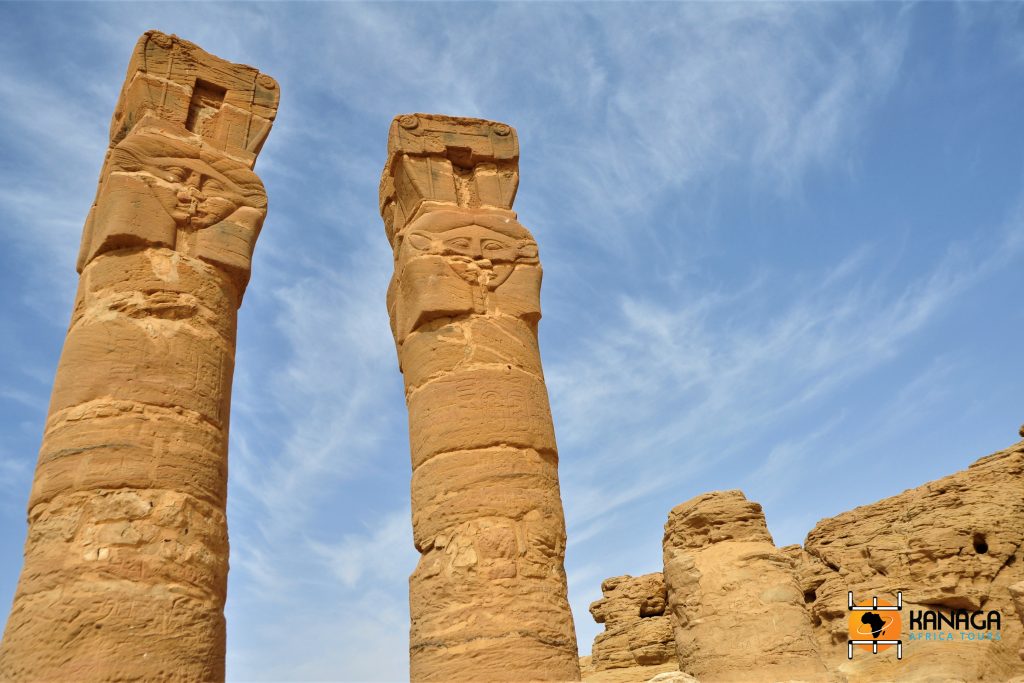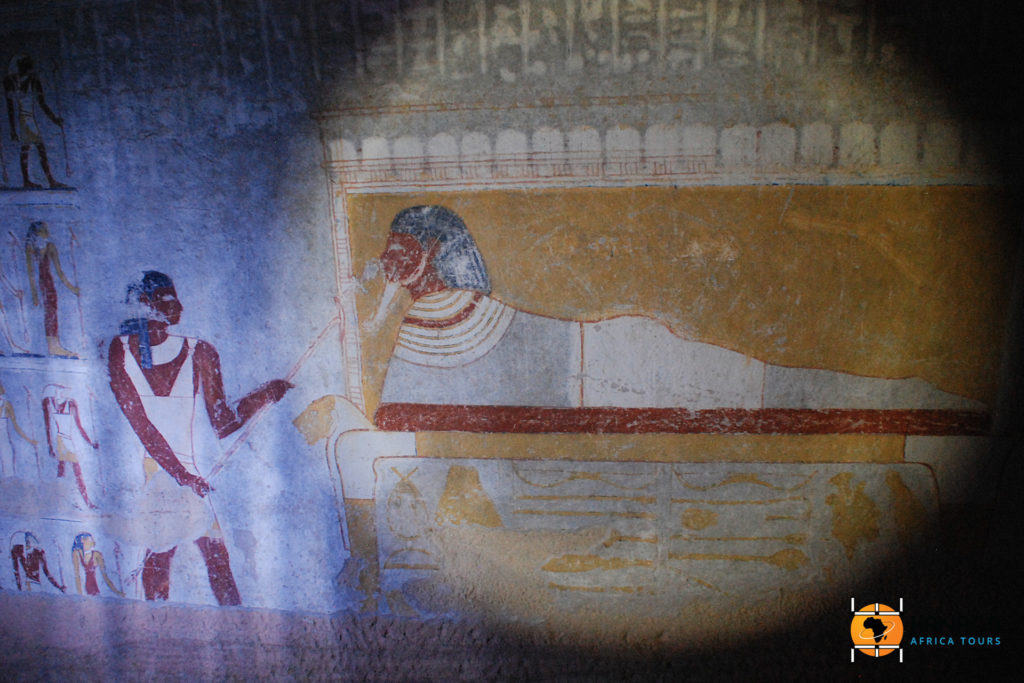The Jebel Barkal mountain was the most sacred place not only to the Kushite culture, but also and especially to the Pharaonic dynasties of Ancient Egypt.
Arriving to this hill, one is not surprised by the respect and veneration still shown to it by the local population, nor by the reason why the Egyptians founded their new spiritual centre here some 3,500 years ago. The rocky outcrop with its obvious cobra-head shape immediately recalls the uraeus, the symbol of Pharaonic royalty. It is likely that the natural erosion of the rock was interpreted as a divine sign.
It was here, first under Egyptian rule and later under the 25th Dynasty of the Black Kushite Pharaohs, that the powerful Napata flourished, the economic, political and religious centre of the Nile Valley, with its temples sacred to the god Amun and his wife Mut, rich palaces and royal tombs. It was here that the Kushite rulers chose to rest with their treasures, having pyramids and richly decorated underground tombs built.
Climbing to the top of the peak will give you an idea of the majesty of the place and its mystical atmosphere, offering an incredible panorama of the former glories of the Kush land.
A group of pyramids at its foot, built at the time of the transition of power between Napata and Meroé, glow in the light of sunset, making this timeless place even more impressive. Not far away are the necropolises of the most important Napata pharaohs, El-Kurru and Nuri, where the great Taharqa chose to be buried.
Unfortunately, the clumsy British archaeological campaigns of the 19th century contributed to a considerable loss of most of the frescoes in the burial chambers and today only two underground tombs retain the original historiated and celebratory decorations in lapis lazuli, purple, ochre and gold, which were meant to triumphantly accompany and present the semi-divine nature of the deceased to the powerful Kingdom of the Dead.







